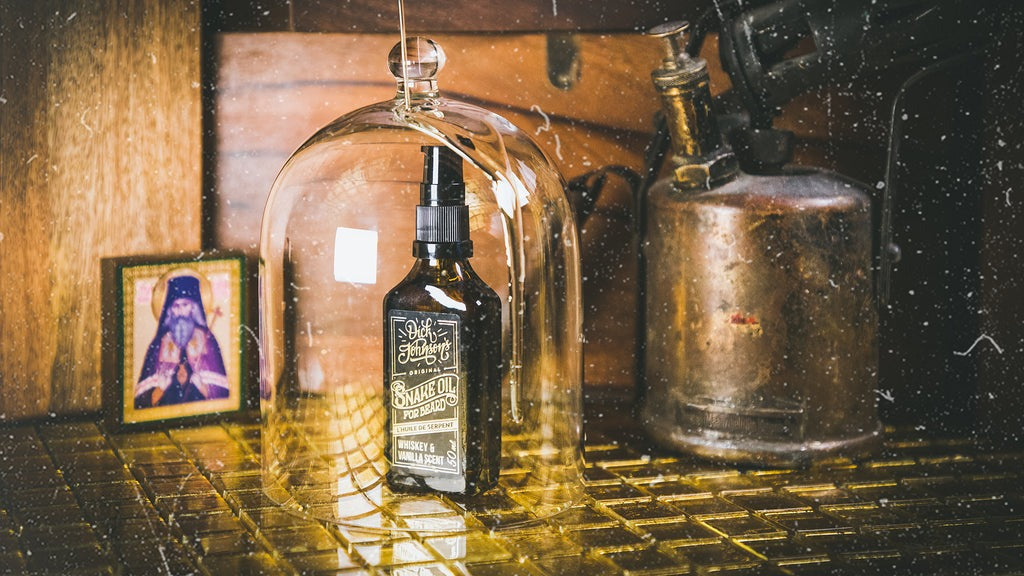
Dick Johnson’s Snake Oil is inspired by the miracle cures sold in industrializing 19th-century America that promised to fix every ailment under the sun.
Placebos, scams, and empty promises. Since the Wild West, “snake oil” has become synonymous in everyday language with miracle cures sold by those with less-than-pure intentions.
Yet, the snake also appears in the Rod of Asclepius — the symbol of modern medicine. You’ll often see the snake coiled around a staff on medicine cabinets or the side of an ambulance. But where did this connection between snakes, medicine, and healing begin?
Even in ancient times, the snake’s ability to shed its skin was seen as a symbol of rebirth and rejuvenation. Asclepius was the Greek god of healing and well-being. According to legend, a snake that slithered around his staff granted him the power to raise his son from the dead.
The temples of Asclepius were the foundation of healthcare in ancient Greece, and snakes crawling freely within the temples were a key part of the healing process. The snake drinking from the cup of the goddess of health, Hygieia, remains a pharmacy symbol to this day.
But where did the actual snake oil originate from — and how did it become linked with deception and false promises?
In traditional Chinese medicine, oil from the Chinese water snake has been used for centuries to treat inflammation. Authentic snake oil is rich in omega-3 fatty acids, making it highly effective for joint pain and other ailments.
While genuine Chinese snake oil was a potent remedy, by the late 1800s it had already gained a reputation as a useless scam. The miracle cure brought to North America by Chinese laborers was quickly taken by a man known as the Rattlesnake King—Clark Stanley.

In the late 19th century, patent medicines and tonics boomed across the growing, industrialized United States. With zero scientific evidence, these miracle tonics promised to cure everything from kidney problems to headaches and “women’s complaints.”
Chinese water snakes didn’t exist in North America. Stanley’s version was made using rattlesnakes and inspired by the native Hopi people—but rattlesnakes don’t contain nearly as many beneficial fatty acids as their Chinese cousins.
With no regulation in place, the market flooded with fakes. It became common for manufacturers to place their name and image on the label as a guarantee of authenticity and quality.
To combat this, the U.S. passed the Pure Food and Drug Act in 1906. In 1916, an analysis of Stanley’s snake oil revealed it mostly contained mineral oil from animals, capsaicin from chili peppers, and turpentine.
Thanks to the Rattlesnake King, snake oil gained a disgraceful reputation — and the term stuck, now used to describe any unproven or deceptive “miracle” remedy. Even today, “snake oil salesman” is still thrown around in U.S. political discourse.
Dick Johnson’s Snake Oil beard oil was created to redeem the name of snake oil. We’ve always been fascinated by mysticism, deception, and the raw essence of humanity—but this time, we wanted to create a *real* miracle cure for beards everywhere. Snake Oil is handcrafted in Tuusula, Finland, using high-quality argan, jojoba, and almond oils.
With over 1,500 reviews, it’s safe to say this time, snake oil *really does* work wonders!



